Kelvin probe measures Contact Potential Difference (or CPD) between a sample of interest and its tip.
This noble task is performed to learn about the Work Function of the sample. That in turn gives information on the position of sample’s Fermi level for physicists or electrochemical potential for chemists.
Since one is mostly interested in properties of the sample under study, it is usually assumed that the tip’s Work Function remains stable throughout the experiment. Thus, any changes in the observed CPD are attributed to the change of the sample.
Indeed, the tip is often gold coated, because gold is to a good degree chemically inert, and seasoned in ambient atmosphere, so all water that could be adsorbed or chemisorbed on the tip’s surface has done it so.
Here is an example of such a measurement.
Sample-tip CPD
The Kelvin probe is used to measure a CPD between a chunk of anodized aluminum and the tip for nearly 21 hours in ambient air.
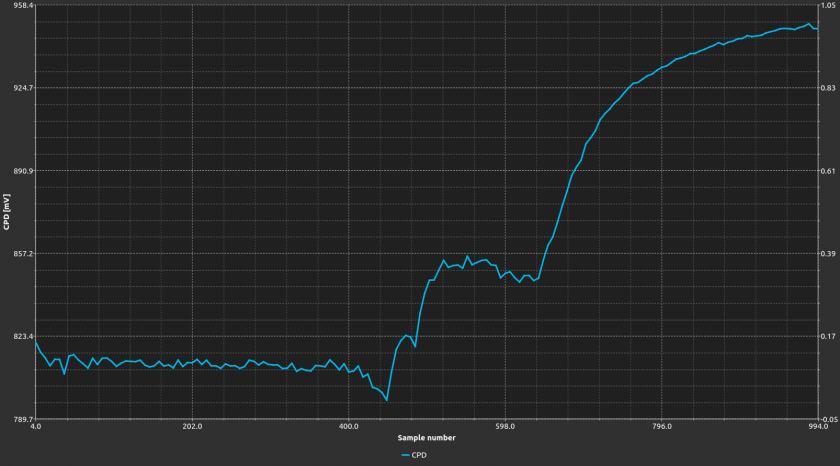
Temperature and relative humidity
The CPD increases by about 150 mV due to the environmental changes. The ambient temperature (green) and relative humidity (orange) have changed in the following fashion
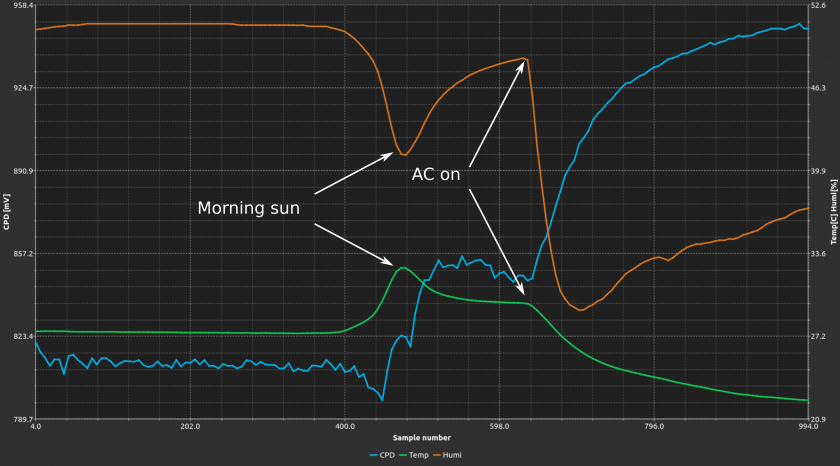
The changes in the temperature and the humidity are caused by
- the sunlight entering the lab in the morning and
- the Air Conditioning turned on later on.
The sunlight entering the window of our lab rises the temperature at roughly fixed water vapor density, so the relative humidity drops.
The AC has different effect. It lowers the temperature and dries the air at the same time. So, when the temperature drops, the relative humidity drops as well up to about 700th sample. Then the water vapor density stabilizes again and the usual reverse temperature - relative humidity relation kicks in.
Absolute humidity
This is confirmed by the recorded absolute humidity expressed in grams of water molecules per cubic meter

With ordinary Kelvin probe systems working in ambient air the story would be over by now. We see the CPD between the anodized aluminum and the tip reacting to the changes in the environment and would draw conclusions that a water layer on the sample affects its Work Function.
Complete Kelvin Probe
The Complete Kelvin Probe (CKP) is the newest baby of the Kelvin probe theory developed by Instytut Fotonowy.
It measures complete set of quantities involved. It relates not only sample-tip CPD but also:
- Sample - Faraday cage CPD – called sample CPD
- Tip- Faraday cage CPD – called tip CPD, and
- Reference Finger - Faraday cage CPD – called reference CPD.
Namely, with a Complete Kelvin Probe you can see how much of sample-tip CPD change is due to the sample and how much to the tip!
Sample CPD
The sample CPD (red) changes by about 60 mV …
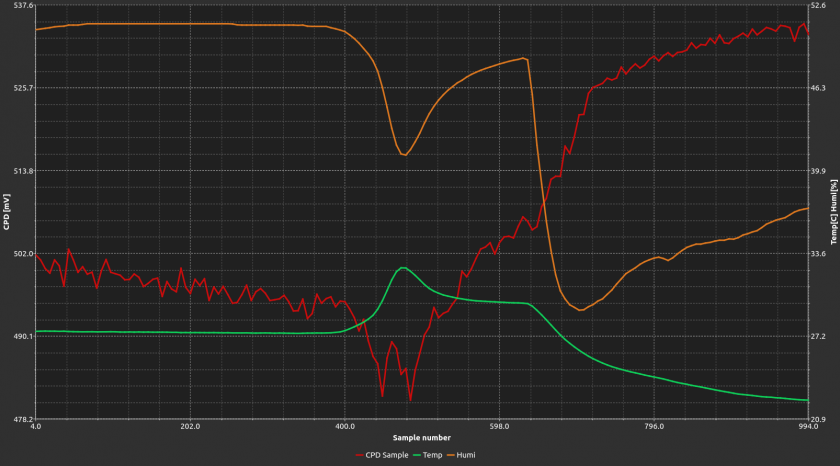
Tip CPD
… while the tip CPD (gold) changes by about 100 mV!
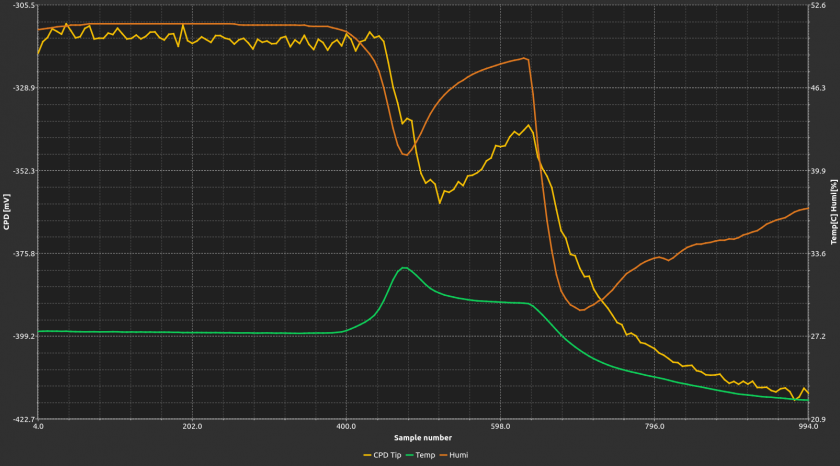
That should cast some doubts on the stability of the tip’s Work Function if exposed to water vapor.
The Reference Finger
The CKP is equipped with a new element, called by us a Reference Finger, that forms a second capacitor with the tip. This additional capacitor makes the set of equations relating various CPDs complete i.e., there are as many independent linear equations as the unknown quantities.
And that is the beauty of the CKP solution: It does not depend on the material or the surface quality or the adsorbates of the Reference Finger! All those effects are measured and taken care of anyway.
Here is the Reference Finger CPD with respect to the Faraday cage
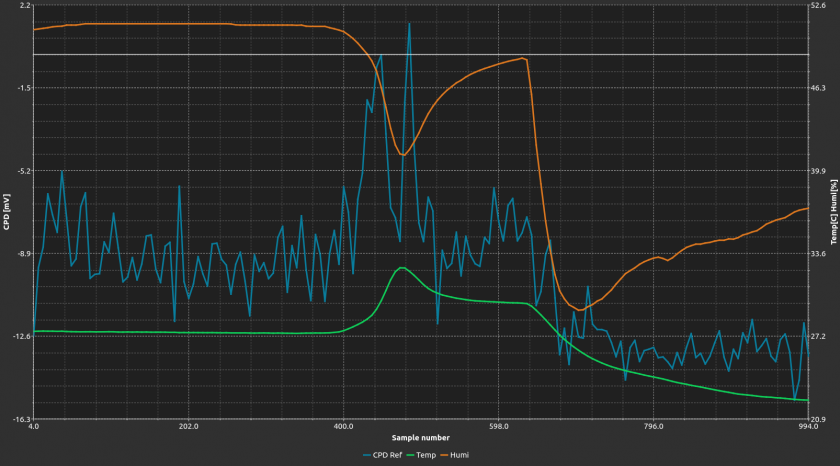
It changes just on the 10 mV level but still is accounted for in determination of all other CPDs.
Summary
With Complete Kelvin Probe, it is possible to distinguish between the tip and sample changes during CPD measurements.
You can play with the recorded data yourself by downloading the ascii CKP data file.
The figures presented in this post had averaging over 6 samples turned on.